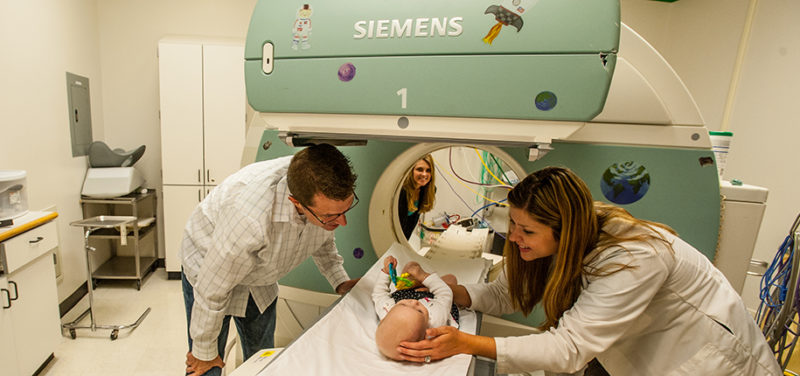
When nuclear medicine studies are performed, a small amount of a radioactive medicine is given to your child or teenager. A special, extremely sensitive camera is used to take pictures of the parts of the body that are needed, or to measure how an organ is functioning in the body. Different radioactive medicines are used to look at the function of different body organs or to find particular tumors in the body. In order to keep the dose of radiation as low as possible, the radiologists at Cincinnati Children’s have been leading the way in researching dose reduction for many years. It is important to know what the smallest dose of each radioactive medicine is that can be used for each type of pharmaceutical used in nuclear medicine.
An infant in a children’s hospital may weigh as little as 2.5 kg, while a teenage patient may weigh the same as an adult. The radiology physicians who are in charge of the nuclear medicine tests at Cincinnati Children’s have worked for over three decades to determine the smallest radioactive drug doses that can be used to obtain quality results. Research at Cincinnati Children’s showed that the best way to calculate the dose of a radioactive medicine is to use the patient’s weight to calculate the amount of drug that should be administered. When a survey of children’s hospitals in North America in 2008 showed that that there was a wide range of dose levels used at different children’s hospitals, the doses that were used at Cincinnati Children’s were found to be lower than those used at the other US and Canadian children’s hospitals. A doctor in the Cincinnati Children’s Hospital Radiology Department, Dr. Michael Gelfand, led the effort that set guidelines for new lower standard radioactive drug doses, which were then adopted by 10 of 13 major children’s hospitals across North America. The new lower standard doses are similar to those that were already in use at Cincinnati Children’s.
Nuclear medicine and the radiology department continue to set the bar higher each year for to- quality imaging. We thank you for allowing us the opportunity to provide your children and family with excellent diagnostic imaging.
Contributed by Dr. Michael Gelfand edited by Bessie Ganim (Spec Tech-Nuc Med).
